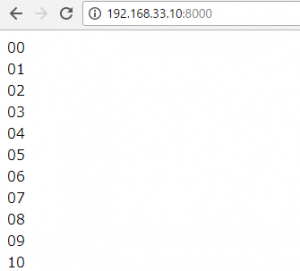微分の関数とは
limb→a f(b)-f(a)/(b-a)
f(x)を微分するとf'(x)になる
(X^n)’ = nx^n-1
(sin x)’ = cos x
(tan x)’ = 1/cos^2x
(e^x)’ = e^x
うむ、微分の理論はなんとなくわかってきたか。
ソフトウェアエンジニアの技術ブログ:Software engineer tech blog
随机应变 ABCD: Always Be Coding and … : хороший
微分の関数とは
limb→a f(b)-f(a)/(b-a)
f(x)を微分するとf'(x)になる
(X^n)’ = nx^n-1
(sin x)’ = cos x
(tan x)’ = 1/cos^2x
(e^x)’ = e^x
うむ、微分の理論はなんとなくわかってきたか。
数学基礎
→ 変数、定数、1次式、2次式、関数、平方根、累乗、累乗根、指数関数、対数関数、自然対数、シグモイド関数、三角関数、絶対値とユークリッド距離、数列、要素と集合
微分
→ 変数の微小な変化に対応する、関数の変化の割合の極限を求めること
→ 関数の各点の傾き
線形代数
確率・統計
機械学習モデルを理解することがまず第一
ロジスティック回帰
– 線形回帰式をシグモイド関数にかけて確率値と解釈
ニューラルネットワーク
– ロジスティック回帰の仕組みに隠れ層ノードを追加
サポートベクターマシン
– 2クラスの標本値と境界線の距離を基準に最適化
単純ベイズ
– ベイズの公式を用いて観測値から確率を更新
決定木
– 特定の項目の閾値を基準に分類
ランダムフォレスト
– 複数の決定木の多数決で分類を実施
ロジスティック回帰、ニューラルネットワーク、ディープラーニングは、
予測モデルの構造は事前に決まっていて、パラメータ値にだけ自由度
モデルの構造
(1)個々の入力値にパラメーター値をかける
(2)かけた結果の和をとる
(3)結果にある関数を作用させ、その関数の出力を最終的な予測値(yp)とする
パラメータ値の最適化が学習
モデルが正解値をどの程度正しく予想できるかを評価するための損失関数を定める
つまり、ディープラーニングは線形回帰モデルの発展型といっても過言ではない。
最初に「線形回帰モデル」を学び、そこから、分類モデルのロジスティック回帰、ニューラルネットワーク、ディープラーニングを理解するのが良い。なるほど。
まず、00-99までは、for文を入れ子にして繰り返す。
for($i=0; $i<10; $i++){
for($j=0; $j<10; $j++){
echo $i.$j."<br>";
}
}

000~999 入れ子を増やす
$time_start = microtime(true);
for($i=0; $i<10; $i++){
for($j=0; $j<10; $j++){
for($k=0; $k<10; $k++){
echo $i.$j.$k."<br>";
}
}
}
$time = microtime(true) - $time_start;
echo "{$time} 秒";
0.0011639595031738 秒
0~9999 4重にする
$time_start = microtime(true);
for($i=0; $i<10; $i++){
for($j=0; $j<10; $j++){
for($k=0; $k<10; $k++){
for($l=0; $l<10; $l++){
echo $i.$j.$k.$l."<br>";
}
}
}
}
$time = microtime(true) - $time_start;
echo "{$time} 秒";
0.017668008804321 秒
なるほど
from decimal import Decimal, getcontext from vector import vector getcontext().prec = 30 class Line(object): NO_NONZERO_ELTS_FOUND_MSG = 'No nonzero element found' def __init__(self, normal_vector=None, constant_term=None): self.dimension = 2 if not normal_vector: all_zeros = ['0']*self.dimension normal_vector = Vector(all_zeros) self.normal_vector = normal_vector
Ax + By + Cz = k1
Dx + Ey + Fz = k2
[A B C], [D E F] not parallel
dx = vector from x0 to x
Since x0, x in plane 1, dx is orth to n1
-One equation in two variables defines a line
-One equation in three variables define a plane
Caution: Count variables with coefficient 0
x + y = 2 defines a line in 2D
x + y = 2 defines a plane in 3D
systematically manipulate the system to make it easier to find the solution
– Manipulations should preserve the solution
– Manipulations should be reversible
Geometric object = a set of points satisfying a given relationship(e.g. equations)
“Flat” = defined by linear equations
Linear equations:
-Can add and subtract variables and constants
-Can multiply a variable by a constant
Linear: x + 2y = 1, y/2 – 2z =x
Nonlinear: x^2 -1 = y, y/x = 3
Equations come from observed or modeled relationships between real-world quantities.
ML for trading
stock:A, B
Wa = proportion of portfolio invested in A
Wb = proportion of portfolio invested in B
0 < Wa, Wb < 1
β value = measure of correlation of a stock's price movements with market movement
β of portfolio = weighted average of individual components' β values
Wa + Wb = 1
B portfolio = 2Wb - Wa = 0
Variables: weights of the stocks
Constraints: equations representing physical realities or objectives
Lines in Two dimensions
Two pieces of info define a line
-basepoint x
-direction vector v
x(t) = x + tv
Ax + By = 0
(A and B not both 0)
Inner Products(Dot Products)
v*w = ||v||*||w||*cosΘ
def dot(self, v):
return sum([x*y for x,y in zip(self.coordinates, v.coordinates)])
def angle_with(self, v, in_degrees=False)
try:
u1 = self.normalized()
u2 = v.normalized()
angle_in_raddians = acos(u1.dot(u2))
if in_degrees:
degrees_per_radian = 180./ pi
return angle_in_radians * degrees_per_radian
else:
return angle_in_radians
except Exception as e:
if str(e) == self.CANNOT_NORMALIZE_ZERO_VECTOR_MSG:
raise Exception('Cannot compute an angle with the zero vector')
else:
raise e
P -> Q
magnitude of v = distance between P and Q
h^2 = (△x)^2 + (△y)^2
v = √(Vx^2 + Vy^2)
-A unit vector is a vector whose magnitude is 1.
-A vector’s direction can be represented by a unit vector.
Normalization: process of finding a unit vector in the same direction as a given vector.
[0 0 0] = 0
||0|| = 0
1 / ||0|| = ?
def magnitude(self):
coordinates_squared = [x**2 for x in self.coordinates]
return sqrt(sum(coordinates_squared))
def normalized(self):
try:
magnitude = self.magnitude()
return self.times_scalar(1./magnitude)
except ZeroDivisionError:
raise Exception('Cannot normalize the zero vector')
def plus(self, v):
new_coordinates = [x+y for x,y in zip(self.coordinates, v.coordinates)]
return Vector(new_coordinates)
– Addition
– Subtraction
[1 3] – [5 1] = [-4 2]
– Scalar Multiplication
2, 1, 1/2, -3/2
[8.218 -9.341]+[-1.129 2.111]=[7.089 -7.23]
[7.119 8.215] – [-8.223 0.878]=[15.342 7.337]
7.41[1.671 -1.012 -0.318]= [12.382 -7.499 -2.356]
def plus(self, v):
new_coordinates = [x+y for x,y in zip(self.coordinates, v.coordinates)]
return Vector(new_coordinates)
def minus(self, v):
new_coordinates = [x-y for x,y in zip(self.coordinates, v.coordinates)]
return Vector(new_coordinates)
def times_scalar(self, c):
new_coordinates = [c*x for x,y in zip(self.coordinates, v.coordinates)]
return Vector(new_coordinates)
def __str__(self):
return 'Vector: {}'.format(self.coordinates)
def __eg__(self, v):
return self.coordinates == v.coordinates